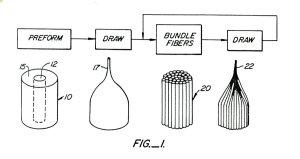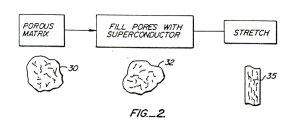
Figure 1 from Pauling’s superconductivity patent.
[Part 3 of 3]
As they continued to explore possibilities for creating improved superconductors, one challenge that Linus Pauling and his associates faced was in verifying that their technique was successful. This was in part due to the fact that measuring changes in superconductivity was very difficult, given the small diameter of the tin used and the challenge in gaining ample contact.
Attempting to gauge the efficacy of their superconducting material, Pauling’s colleague Zelek Herman sent a sample off to Dr. Howard Hart at the General Electric Research and Development Center in Schenectady, New York, requesting that Hart run tests of their samples to determine a temperature of superconductivity (Tc), if one existed at all. It is from this communication that we are able to learn much about the the samples that the group created.
Herman sent two vials to be tested, with a third vial to be used as a reference. The first vial contained a piece of a strand of a superconducting niobium-titanium seven-stranded cable about 9 cm long. This was produced by snipping off a piece of one of the strands, immersing it in 90% formic acid for one hour, rinsing it with deionized water, and drying it with a paper towel to remove residual heavy formvar. Then it was rubbed with fine steel wool and blown with compressed air. The contents of this first vial were to serve as the reference for testing the wires in vials two and three.
The second vial contained a piece of similar length, but the mass was much less and it was 0.05 mm thick, as opposed to the reference sample’s 0.8 mm diameter. The third vial contained three pieces of square wire ranging between 9 and 11 centimeters, each of which had a diameter of about 0.3 mm, and estimated to be about 4.8% superconducting material. At the end of Herman’s accompanying letter to Hart, he added that he did “not expect any elevation in Tc for any of these samples; rather, this is a test to see if you can detect a superconducting transition for samples containing a small, but continuous, amount of superconductor.” Hart’s reply, if one was sent, is not held with the copy of Herman’s original letter extant in the Pauling Papers.

Early Pauling notes on superconductivity, August 1971.
First drafted in May 1988, a copy of the patent application for Pauling’s “Technique for Increasing the Critical Temperature of Superconducting Materials” was returned to Pauling on December 7, 1990, with requests from the Examiner to make some changes. The deadline to return the application was tight but Pauling complied, submitting his changes on December 12.
Finally, on October 27, 1992, the group’s four years of work came to fruition in the form of a patent. The “Method of Drawing Dissolved Superconductor,” Patent No. 5, 158, 588, was a continuation of application serial number 7/366, 574, which was filed on June 15, 1989. The June 1989 application was, in turn, a continuation of the initial patent application number 7/200, 994, filed May 31, 1988.
In the abstract for the “Method of Drawing Dissolved Superconductor,” it is stated that “a preform for drawing superconducting wire is prepared by mixing fine particles of a superconducting material, containing barium, potassium, bismuth and oxygen, with a solvent, containing potassium hydroxide, in a tube.” After the preform is heated and drawn, the superconductive material dissolves in the solvent, and deposits from the solution as “a solid network of crystals in contact with one another.”
The final patent included basically all of the components of the previous patent applications. The invention provided “a technique for increasing the critical temperature, critical magnetic field, and maximum current density of any of a range of already known superconducting materials.” As in descriptions of the invention submitted with previous patent applications, the structure was the same: superconducting material in the form of fine strands was embedded in a “wave-guiding matrix” which was to be made of some non-conductive material.
In its “Overview” section, the patent states that the superconducting strands within the matrix are generally round and that optimum strand diameters should lie in the range of 50-2000 angstroms. Various techniques are provided – using one method, a composite billet could be formed of bars of the superconducting material surrounded by bars of the matrix material and then stretched until the desired diameter was reached.

Figure 2 from Pauling’s superconductivity patent.
A different method entailed the use of a porous matrix, such as an artificial zeolite or an aluminosilicate, the pores of which are filled with the superconducting material. This done, the entire ingot could be stretched to reduce the diameter of and align the superconducting strands. Another aspect of the invention proposed that strands of a crest superconductor and strands of a trough superconductor could be “alternating and insulated from one another in the matrix.” The relative amounts of the two superconductors would minimize phonon interaction.
“Method of Drawing Dissolved Superconductor” was one of the last inventions that Pauling patented and among the last lines of research that he pursued after a lifetime of scientific accomplishment. Steve Lawson, one of Pauling’s associates on the project, noted in an August 2011 interview that Pauling’s goal in pursuing the superconductor patent was to raise money for the Linus Pauling Institute of Science and Medicine. By the time that his superconductor invention was patented, Pauling was in his early nineties and not interested in adding to his personal wealth; rather, he hoped instead to help stabilize the Institute’s chronically shaky finances.
After Pauling’s death in August 1994, the project fell into neglect, primarily because stable funding could not be secured. However, superconductors continue to be important today in a wide range of uses, including Magnetic Resonance Imaging machines, maglev (“magnetic levitation”) trains and electric generators.
Further research in the field of superconductivity is likely to continue to flourish for a number of reasons. Clearly the commercial application of higher temperature superconductors is a primary motivation. Likewise, according to the authors of 100 Years of Superconductivity, published in 2012, “establishing the range of existence of superconductivity among material types is obviously an important scientific question, and this purely scientific motivation drives the search for new superconductors to this day.” The book also states that there is no known reason why much higher temperatures of superconductivity should not exist.
It would stand to reason then that the scientific community will continue to explore temperature and material limitations as time goes on, continuing a course of research that included Linus Pauling in its beginnings.
[Ed Note: This is our final post for the year. Thanks for reading and we'll see you in 2013!]
